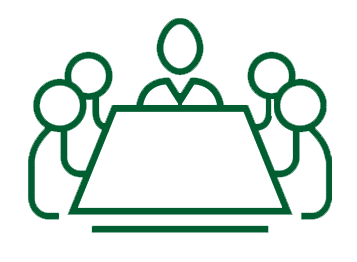Word on the street > Mid-Year Industry Pulse—Onward and Upward; Bringing the Outside World In: Learning From Other Industries
Word on the Street: Issue 194
Weekly real-time market and industry intelligence from Morrissey Goodale firm leaders.

Mid-Year Industry Pulse—Onward and Upward
This June, our “State of the Industry” assessment at the Western States M&A and Business Symposium will provide the first opportunity for the 200-plus CEOs and investors in attendance at the Wynn Hotel, Las Vegas to take the pulse of the national AE and environmental industry at the halfway mark of 2024.
The assessment will include up-to-the-minute data on industry financial performance (profits, utilization, revenues per employee, etc.) and financial condition (current ratios, debt-to-equity levels, etc.). We’ll also be sharing what’s going on with C-suite compensation, backlogs, end markets, M&A, valuations, and technology deployment. All of the trend and performance data will be sourced from the hot-off-the-presses 45th annual Deltek Clarity Architecture & Engineering Industry Study of over 600 design and environmental firms augmented with our proprietary real-time, year-to-date financial performance and valuation databases.
We can get an early preview of mid-year industry performance from the CEOs and investors who will be attending the symposium this June in Las Vegas. Based on what they’re telling us, 2024 is on track to be yet another blow-out year of growth and profitability.
1. First, a word on who’s coming to Las Vegas: Eighty-seven percent of the attendees are CEOs and C-suite executives, six percent are M&A executives (mostly from ENR Top 100 firms), and the balance are industry investors. Half are representing firms with over $100 million in revenue (generally with a national or global footprint). The balance represent firms of less than $100 million, generally from the 13 Western states. While 60% of the firms attending are employee-owned, 35% have a financial sponsor and 5% are publicly traded. These are the folks giving us a first read on how things are shaping up.
2. “Full steam ahead”: Eight out of ten symposium attendees expect 2024 to be an even better year for their firms than 2023 was. This is the strongest sentiment we’ve ever recorded at our symposiums. It reflects the unbridled sense of optimism and confidence that we are seeing in virtually all of our strategy and advisory work. Leadership teams around the country continue to experience unprecedented levels of sustained demand for their services. With no end in sight. The median backlog in the industry is a very healthy 11 months—with many firms doubling that. In this environment, leadership teams, confident of their own abilities, are doubling down on organic and acquisitive growth initiatives. Most of the balance of this year’s attendees expect 2024 to be on par with 2023. Just 2% are expecting a downturn this year. These are heady times, indeed, for industry leaders and shareholders.
3. Sisyphean: Pity poor Sisyphus. Condemned to the underworld where he was forced to roll a boulder up a hill repeatedly…for eternity. That’s what the number-one challenge for industry leaders feels like. Finding and keeping the best talent—year in, year out. For more than a decade, it has been the number-one challenge facing industry leadership teams. Eight in ten attendees cite finding and keeping the talent necessary to meet demand as their number-one challenge midway through 2024. At past symposiums, this topic was cited as the biggest challenge for between 70% and 75% of attendees. This problem ain’t going away—it’s even more acute now.
4. Oh, the Places You’ll Go…: Fully 66% of attendees see growth—either geographically, into new market sectors, through additional services, organically, or through acquisition—as the greatest unmet or untapped opportunity for their firms this year. This is an industry that is approaching business on the balls of its feet. Ready and eager to go all the way in the playoffs. This is the highest score that we’ve seen in response to this question. In prior symposiums, this percentage averaged between 49% and 63%. Such is the confidence in the business environment this year. Another one-fifth of attendees view unlocking the potential of new technologies such as AI as being their number-one untapped opportunity. (Note: We’ll be covering this topic in our symposium workshop “AI for the AE CEO: Making AI a Competitive Advantage for Your Firm.”)
5. Finding the right partner for growth: Similar to the dynamic at our Miami symposium in March, nine in ten attendees have M&A of some kind on their minds and are either planning an acquisition in 2024 or they are considering a sale or recapitalization. Again, this is a record level of responses. In the past, this level of interest in M&A typically hovered around 80%. This result is entirely reflective of one of the three biggest trends sweeping the industry where every CEO is receiving inquiries to sell or recapitalize almost daily.
6. Digitization distraction? Just 50% of attendees in Las Vegas either will or will possibly generate revenues through digital services and/or products. This is a decline from what we saw in Miami when over 70% of attendees reported that they would be incorporating digitization initiatives to meet client demands, improve service offerings, and increase profits.
7. All-consuming AI: Almost 70% of the attendees (up from 50% in Miami) are using artificial intelligence in their businesses. Almost 40% of those report using it for marketing, with another 20% deploying it to gain efficiency in operations.
8. Celebrating M&A best practices: Applications continue to roll in for this year’s M&A Best Practices Award, which will be presented at the symposium. If you wish to be considered, we invite you to complete the simple application form here. The application should take no more than 20 to 30 minutes to complete. Applications are being accepted until May 17.
So, it’s looking like 2024 is on track to be another year full of rewards and opportunities for shareholders and managers. Now, if only we could find the people to do the work…
The Western States M&A and Business Symposium—now in its 10th year—is the destination for AE industry executives and investors to get a first read on mid-year industry performance, learn about the latest trends and best practices, and network with over 200 executives, investors, and experts from the West and around the nation. Register today to reserve your place.
To connect with Mick Morrissey, email him at [email protected] or text him at 508.380.1868.
Bringing the Outside World In: Learning From Other Industries
Installment #3: Project Management
In this latest installment of Bringing the Outside World In, we explore how AE firms can integrate proven techniques from other industries to improve their project delivery, team collaboration, and client satisfaction.
1. Agile Methodologies from Software Development
Software development companies such as Scrum Alliance and Atlassian have popularized agile methodologies. Agile emphasizes iterative progress, customer collaboration, and adaptability.
Scrum Alliance and Atlassian are well-known in the agile project management space, but they play different roles.
Scrum Alliance is a professional certification organization focused on promoting Scrum, a popular agile framework that organizes work into short, iterative cycles called sprints, typically lasting one to four weeks. It emphasizes collaborative teamwork, frequent feedback, and adaptability, with roles such as Scrum Master and Product Owner guiding the process and key events including daily stand-ups and sprint reviews to ensure ongoing progress and communication.
Atlassian is a technology company that provides software tools to support agile project management. Its key product, Jira, is widely used for project tracking and collaboration in agile teams. Jira allows users to create Scrum boards, track tasks, assign responsibilities, and manage workflows, making it a versatile tool for implementing agile practices. Additionally, Atlassian offers other tools such as Confluence for documentation and Trello for simpler task management.
Application to AE Firms:
- Iterative design: By adopting a sprint-based approach, AE project teams can work on design iterations, collect feedback, and make adjustments in real time. This method ensures a more refined final product and reduces the risk of costly rework.
- Daily stand-ups: Short, focused meetings can improve communication among team members and quickly resolve issues.
- Client collaboration: Engaging clients at each iteration fosters a more collaborative relationship and aligns the project with client expectations.
2. Lean Principles from Manufacturing
Manufacturers such as Toyota have championed Lean principles, focusing on reducing waste, improving processes, and maximizing value. Lean emphasizes efficiency, elimination of non-value-added activities, and continuous improvement.
Toyota developed the Toyota Production System (TPS), a foundational Lean approach that revolves around “just-in-time” manufacturing, continuous improvement (Kaizen), and respect for people. TPS aims to create efficient processes by reducing inventory, eliminating waste, and ensuring that resources are used only when needed. This approach involves all employees in the continuous improvement process and places a strong emphasis on quality and teamwork.
Application to AE Firms:
- Value stream mapping: By mapping their project workflows, AE firms can identify bottlenecks and unnecessary steps. This exercise allows firms to streamline processes, improve efficiency, and reduce waste.
- Just-in-time delivery: AE firms can adopt a just-in-time approach by coordinating with suppliers to deliver materials only when required, reducing excess inventory and storage costs.
- Continuous improvement (Kaizen): Encouraging a culture of continuous improvement fosters employee engagement and drives innovative process enhancements. This approach supports the identification and elimination of inefficiencies, leading to better project outcomes and resource utilization.
3. Project Management Best Practices from Health Care
Health care organizations have adopted various project management best practices to improve patient care, streamline processes, and enhance operational efficiency. One notable approach can be found in Health Information Technology (Health IT) systems.
Health IT involves the use of technology to manage health care information and enhance patient care. It includes electronic health records (EHR), telemedicine, and health information exchange systems. Leading companies in this space, such as Epic Systems and Cerner Corporation, provide comprehensive Health IT solutions used by hospitals and health care facilities worldwide.
Epic Systems is a major provider of EHR software, offering a unified platform for managing patient records, scheduling, billing, and communication. Epic allows health care professionals to access patient information quickly and securely, improving coordination and reducing errors.
Cerner Corporation provides Health IT solutions that focus on interoperability and data exchange. Cerner’s systems enable seamless communication between different health care providers, ensuring patient information is readily available across multiple facilities and specialties.
Application to AE Firms:
- Technology integration: AE firms can learn from Health IT’s integration of technology. Advanced project management software that is universally used within an organization can be used to track project milestones, share documents, and communicate with stakeholders—all of which can improve project coordination and reduce miscommunication.
- Interdisciplinary collaboration: Health care organizations often involve interdisciplinary teams to improve patient care. AE firms can adopt a similar approach by fostering collaboration among their various internal teams to enhance project outcomes.
4. Design Thinking from Product Development
Design Thinking, popularized by companies such as IDEO and Stanford d.school, is a human-centered approach to innovation and problem-solving. It focuses on empathy, ideation, prototyping, and user-centric solutions.
IDEO is a renowned design firm that applies Design Thinking to create innovative products and services. The process starts with understanding user needs and involves ideation sessions, rapid prototyping, and testing. This iterative approach fosters creativity and leads to customer-focused solutions.
Stanford d.school, an academic institution, educates professionals on applying Design Thinking across various industries. It emphasizes interdisciplinary collaboration and hands-on experimentation to solve complex problems creatively.
Application to AE Firms:
- Empathy in design: By focusing on the end-users’ needs, AE firms can create more user-friendly, inclusive, and functional spaces. This approach encourages direct client engagement and feedback.
- Rapid prototyping: Creating physical or digital prototypes allows AE firms to quickly test design concepts and make adjustments before full-scale production.
- Interdisciplinary collaboration: Design Thinking promotes collaboration across different disciplines, fostering creativity and innovation.
Have you adopted any project management best practices from other industries? We’d love to hear from you! Call/Text Mark Goodale at 508.254.3914 or email [email protected].
Market Snapshot: A Measure of Wellbeing Across the U.S.
At Morrissey Goodale, we keep up with all things data. Our market intelligence team is constantly monitoring data specific to architecture, engineering, and environmental industries and markets as well as key economic indicators at various geographic levels.
We recently came across a new metric: the CORE Score.
The CORE Score, published by the American Academy of Arts and Sciences, is a measure of wellbeing for Americans based on economic security, economic opportunity, health, and political efficacy indicators. These scores and their underlying indicators can be indicative of drivers for future investments in states and counties across the U.S.
Here are some of the highlights:
- On a scale of 0 to 10 (10 being the best), the nation’s score was 4.91. The best-performing indicator was health, with a score of 7.83. Economic opportunity (made up of labor force participation, average education level, and median wage growth) was the country’s lowest-scoring category, with 3.80.
- The highest-scoring states and territories were:
- District of Columbia (6.24)
- Rhode Island (5.97)
- North Dakota (5.96)
- Massachusetts (5.93)
- Minnesota (5.93)
- At the bottom of the list for overall wellbeing scores were the following states:
- Arkansas (4.40)
- Louisiana (4.37)
- Georgia (4.31)
- Arizona (4.29)
- Mississippi (4.20)
For the latest insights on U.S. regions and AE markets, check out our 2024 AE Market Intelligence Webinar. Click here to access recording and materials.
To learn more about market intelligence data and research services offered by Morrissey Goodale, schedule an intro call with Rafael Barbosa.
Weekly M&A Round Up
Western U.S. continues to consolidate: Last week we reported another two deals in the Western states, this time in Arizona and Washington. Both of the deals included sellers that were environmental firms. Overseas we reported two deals in the UK. You can check all the week’s M&A news here.
June 12-14, 2024 Las Vegas, NV
Western States M&A and Business Symposium
Join us for the 10th annual Western States Symposium, bringing together over 200 AE and environmental industry executives and investors in one of the world’s most vibrant and iconic cities.
Learn More

Searching for an external Board member?
Our Board of Directors candidate database has over one hundred current and former CEOs, executives, business strategists, and experts from both inside and outside the AE and Environmental Consulting industry who are interested in serving on Boards. Contact Tim Pettepit via email or call him directly at (617) 982-3829 for pricing and access to the database.
Are you interested in serving on an AE firm Board of Directors?
We have numerous clients that are seeking qualified industry executives to serve on their boards. If you’re interested, please upload your resume here.
Subscribe to our Newsletters
Stay up-to-date in real-time.










